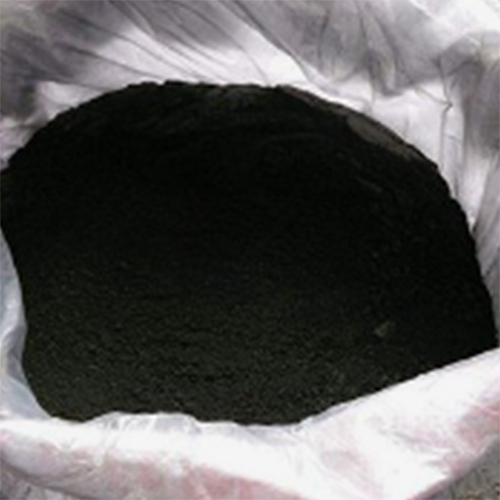The drag reducing agent is composed of various components, including fine graphite, bentonite, curing agent, lubricant, conductive cement, etc. It is usually gray-black in color. It is a good conductor, and it is used between the grounding body and the soil. On the one hand, it can be in close contact with the metal grounding body to form a large enough current flow surface; on the other hand, it can penetrate into the surrounding soil and reduce the surrounding soil. Soil resistivity, forming a gently changing low-resistance area around the grounding body.
product details
Ground resistance reducing agents, also known as soil enhancement compounds or grounding additives, are substances used to improve the conductivity of the soil in grounding systems. These agents are applied to the soil surrounding grounding electrodes or conductors to reduce the resistance of the grounding system and enhance its effectiveness.
Here are some key points about ground resistance reducing agents:
-
Purpose and Function: The primary purpose of ground resistance reducing agents is to lower the resistance of the soil in the vicinity of grounding electrodes or conductors. By improving the conductivity of the soil, these agents help to reduce the overall resistance of the grounding system. This, in turn, enhances the ability of the grounding system to dissipate electrical faults, minimize voltage gradients, and provide a safe path for electrical currents to flow to the ground.
-
Composition: Ground resistance reducing agents typically consist of a mixture of conductive materials, such as metallic particles or salts, along with additives that enhance soil conductivity. The specific composition of these agents may vary depending on the manufacturer and the desired application. Commonly used conductive materials include copper, graphite, bentonite, and carbon-based compounds.
-
Application: Ground resistance reducing agents are typically applied to the soil in the vicinity of grounding electrodes or conductors. The agents are mixed with water to form a slurry or solution, which is then poured or injected into the ground. The application method may vary depending on the specific agent and the site conditions. The agents are designed to mix with the soil and improve its conductivity, thereby reducing the resistance of the grounding system.
-
Benefits: The use of ground resistance reducing agents can offer several benefits in grounding systems, including:
-
-
-
Lower Ground Resistance: These agents help to reduce the resistance of the soil, resulting in lower overall ground resistance. This improves the effectiveness of the grounding system in dissipating fault currents and reducing the risk of electrical shock hazards.
-
Improved Grounding Performance: By enhancing the conductivity of the soil, these agents improve the performance of grounding systems. This can result in better fault current distribution, reduced voltage gradients, and improved equipment protection.
-
Stability and Longevity: Ground resistance reducing agents are designed to be stable and long-lasting in the soil. They resist leaching and degradation, ensuring sustained improvement in soil conductivity over time.
-
-
Considerations: When using ground resistance reducing agents, it is important to consider factors such as soil composition, moisture content, and environmental conditions. Site-specific testing and analysis may be necessary to determine the appropriate type and quantity of agent required for a given application. Additionally, proper installation techniques and adherence to manufacturer guidelines are important to ensure optimal performance and safety.
It's worth noting that the use of ground resistance reducing agents is not always necessary or recommended in every grounding system. Factors such as soil resistivity, ground electrode design, and local regulations should be taken into account when deciding whether to use these agents. Consulting with a qualified electrical engineer or grounding specialist is often advisable to assess the specific requirements and feasibility of using ground resistance reducing agents in a particular application.
 English
English  Español
Español  Português
Português  русский
русский  français
français  日本語
日本語  Deutsch
Deutsch  Tiếng Việt
Tiếng Việt  Italiano
Italiano  Nederlands
Nederlands  ไทย
ไทย  Polski
Polski  한국어
한국어  Svenska
Svenska  magyar
magyar  Malay
Malay  বাংলা
বাংলা  Dansk
Dansk  Suomi
Suomi  हिन्दी
हिन्दी  Pilipino
Pilipino  Türk
Türk  Gaeilge
Gaeilge  عربى
عربى  norsk
norsk  اردو
اردو  čeština
čeština  Ελληνικά
Ελληνικά  Українська
Українська  Javanese
Javanese  فارسی
فارسی  தமிழ்
தமிழ்  తెలుగు
తెలుగు  नेपाली
नेपाली  Burmese
Burmese  ລາວ
ລາວ  Қазақ
Қазақ  Euskal
Euskal  slovenský
slovenský  Македонски
Македонски  Română
Română  Српски
Српски  简体中文
简体中文  Afrikaans
Afrikaans  עִברִית
עִברִית  יידיש
יידיש  Беларус
Беларус  മലയാളം
മലയാളം  Hawaiian
Hawaiian  հայերեն
հայերեն 












